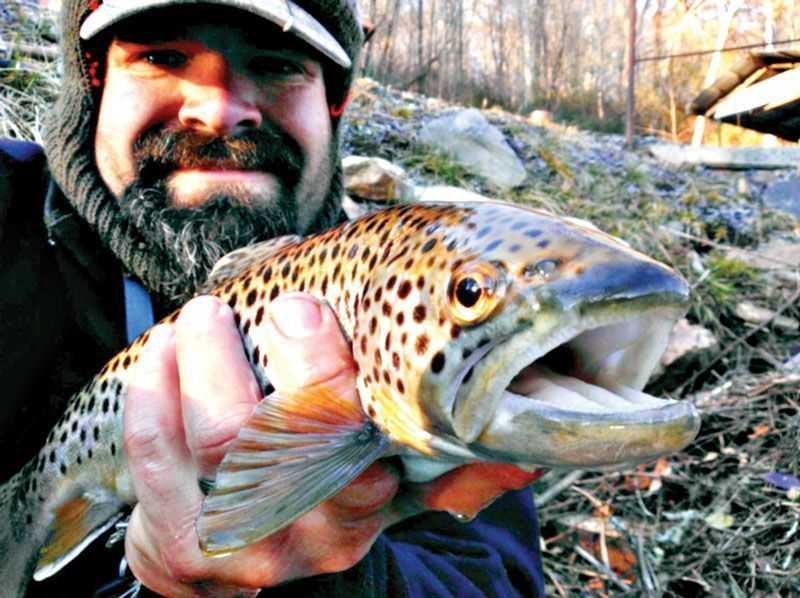By: Joe DiPietro
There’s a reason some anglers consider winter the season for fly-tying, not fishing. For me though, it’s the season I get to fish the most, while the rest of the year is spent doing more guiding and rowing. As it is, figuring out finnicky trout can be maddening. Add uncomfortable cold winter conditions to that equation, and it’s enough to send some anglers back to the tying bench.
The reasons why they are hard to fool go on and on. However, at the core, one of the biggest reasons trout skunk more anglers than other gamefish is merely because they don’t get impulsive about eating very often.
Give me a largemouth bass that is not even thinking about eating, and I can irritate it to the point where it’ll eat just to kill whatever I’m pestering it with. As a rule, trout in the same situation are more inclined to simply shut off rather than eat if bothered too much. However, there are a few ways to make trout act impulsively and eat when they really aren’t interested in doing so.
I’m convinced trout have a calculator in their brain that does the math on each meal to determine whether the calories expended eating outweigh the calories brought in from the meal. This is why a trout feeding on nymphs rarely goes too far from where it’s holding to eat and simply slides side to side a foot or so, opening its mouth and letting the current push each morsel in its mouth.
Perhaps the most common way to garner the attention of a trout that has no interest in eating is to go big. Most anglers think of stripping big streamers when the notion of “going big” arises. While chucking meat to the bank and stripping it back is great for covering water and will make a trout’s calorie calculator sound an alarm to eat, it’s not the only way to go big.
I’ve often said, if I could take one fly to the moon in order to catch trout where there is no water, let alone trout, it would be a rubber legs pattern such as Pat’s Rubber Legs, a girdle bug or some variant thereof.
A heavily-weighted stonefly pattern is to the tandem nymph rig what a big attractor dry pattern is to the dry-dropper, a sinker with a hook in it. I rarely give up on a good run or hole without trying a rubber-legged stonefly pattern first. I will also usually experiment with the postion of the stonefly pattern in the rigging before accepting a zero. On some occasions the fish will only eat it if it’s the only fly offered, or if it’s the last fly in a tandem rig.
Another reason rubber-legged patterns are great impulse flies is because most stoneflies spend a relatively long time in the nymph stage of life. So you can count on the fact that there’s almost always a few of them crawling around on the bottom of any trout stream. They’re also the biggest meal around most days.
Big rubber-legged stoneflies are a nymph fisherman’s meat. To most fish they are simply too big of a meal to pass up. and it is often worth a little bit more energy be sure it’s not missed. Most often, I dead-drift these flies, but I’ve had takes while stripping them in in preparation for my next cast. On occasion, I’ve actually sight-casted big rubber-legged stonefly patterns right on top of big trout that were chasing small baitfish and had them crush it with the same tenacity a bass removes something from its bed in the spring.
If you plan on being out in the coldest months hunting trout, don’t get caught without a few rubber legged stonefly patterns, ranging from size 6 to 12. If you do, I’d wager you’re passing up fish you could have otherwise caught.
Joe DiPietro is a Georgia-based trout guide and a freelance writer and photographer. He can be contacted at fannintrout@gmail.com.
[easy-social-share]
